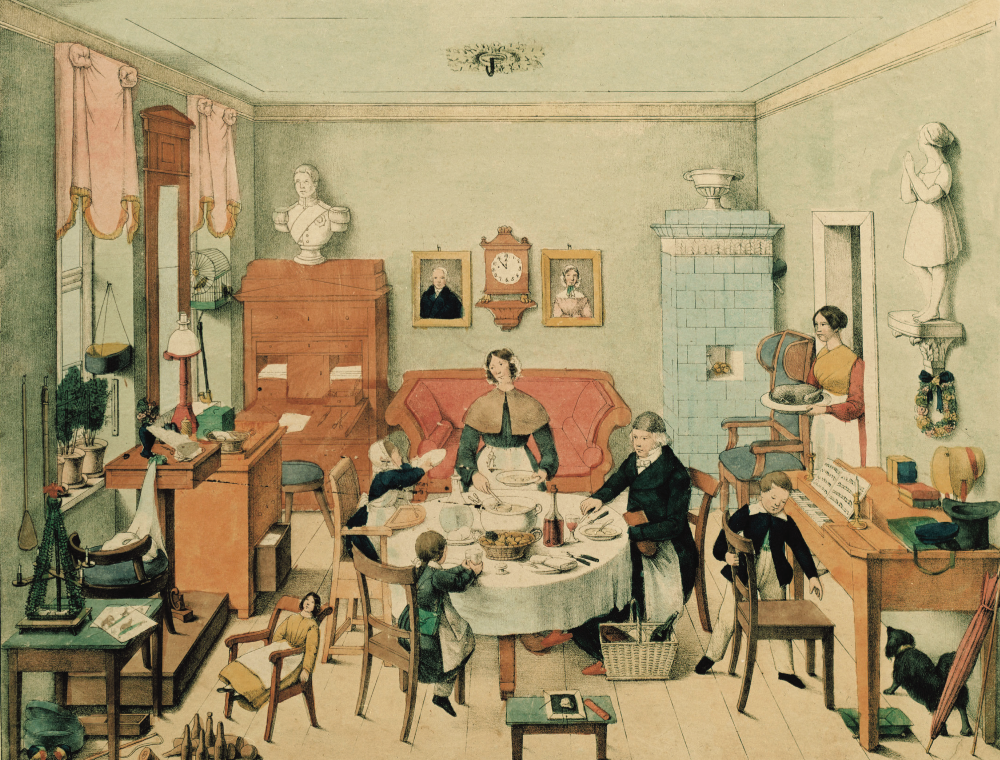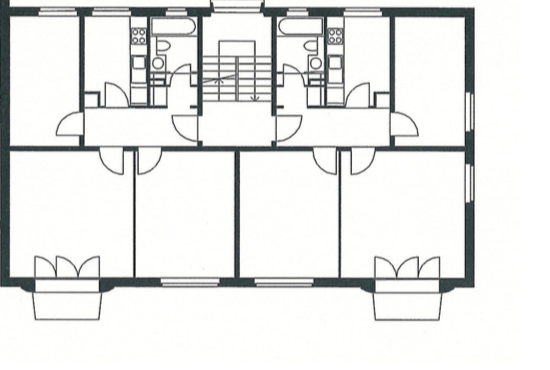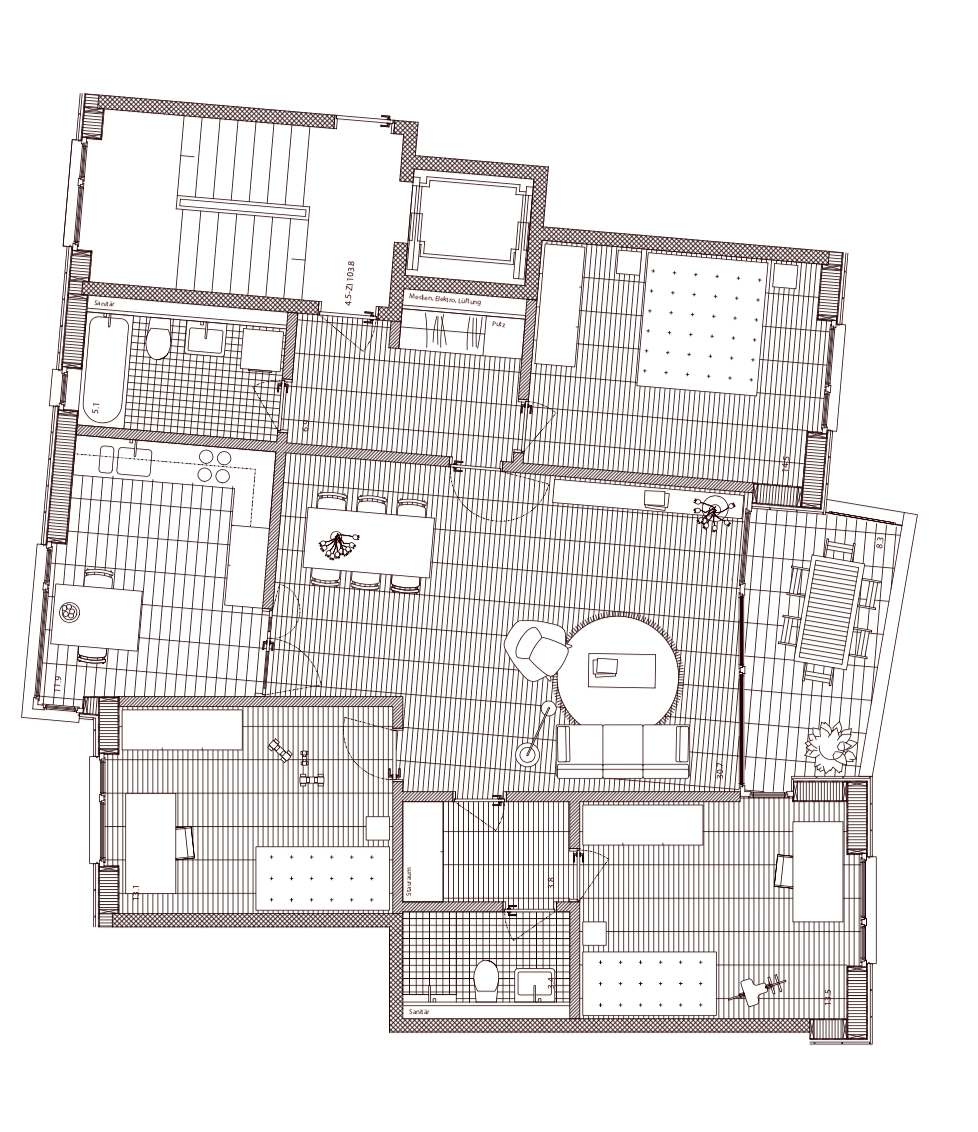DOMESTIC PREMISE: THE LIVING ROOM
In the early 19th century, sparked with the French Revolution some decades earlier, a bourgeois middle class emerged within the European society. The core family became the elementary unit on which the new social structures started to base upon, and new ideals of education and culture were established amongst the aspiring middle classes. As the aristocracy managed to restore their power structures after the Napoleonic Wars in 1915, the increasingly self-confident bourgeoisie was politically oppressed and forced to follow their thoughts in the privacy of their own four walls.
As a consequence of these circumstances, a whole lifestyle was set up around the new importance of the home: the living room was established as the pivotal point of the new everyday life. In combination with industrialization, productive work was expelled from the domestic, and the home itself turned into a place of retreat, privacy, leisure, discussion, culture. The devices for this new space were produced in the upcoming industries: the sofa, the sewing table, the bureau, veneer-covered chairs, house-pianos, — any kind of mass- produced furniture and objects designed to fit the private collective activities of family and friends.
Through the built legacy we encounter in our cities today, the structure for such a middle class lifestyle is our constant companion. Most of our fellow human beings react similarly to what they encounter when moving into a flat: the living room will be filled up with furniture that everybody assumes to belong there. The content of this living space has in reality hardly changed since its invention 200 years ago.
Surprisingly, the outdating of floor plans is today a very common criterion for the replacement of whole housing districts. The same case in Zürich: many garden city neighborhoods have recently been demolished with the argument that the floor plan would not comply with the expectations of what a home is today. Paradoxically, and even if the opposite is suggested, the Ersatzneubauten are in many cases equally following the petit-bourgeois floor plan scheme that has been the supposed reason for its demolition — and many new flats are even less flexible than the cellular precedents of the garden city. The most obvious difference is usually of a quantitative kind: every space is bigger. The quality itself is about the same: two to three bedrooms, one living room and a kitchen.
Very recently, the conception of home is challenged yet again. This time it is not (necessarily) political oppression that forces people back into their private sphere, but a raging virus that hinders the interactions in public and sets up our current lockdown situation. The current Corona-induced crisis reinforces a process that has been increasingly taking place in the recent decades: productive work, once pushed out of the domestic sphere through the success of the bourgeois lifestyle, is conquering the private sphere again. Covid-19 is now accelerating the conceptual transformation of our domestic spaces, the bourgeois setting is readapted to our times: The living room is now a home- office. During the lockdown, we are on one hand forced to experience the classical bourgeois domesticity, where every activity is set in the intimacy of our own four walls. On the other hand, the home-office adds to the furniture of leisure and recreation an infrastructure of production. The long-expected interweaving of the domestic sphere with productive work is now in ultimate execution. The thoughts about the expected outdating of the bourgeois floor plan could therefore maybe become obsolete — and with that may come a new judgement about the existing housing stock.

„Bürgerliche Wohnstube“, Lehrtafel für Kinder, 1840

Garden city: Schwamendingen, A. Sauter + A. Dirler, 1947-56

Ersatzneubau by EMI Architekten, Wohnsiedlung Schwamendinger-Dreieck, Schwamendingen, 2014-23

Demolition statistics, Stadt Zürich, 2015



